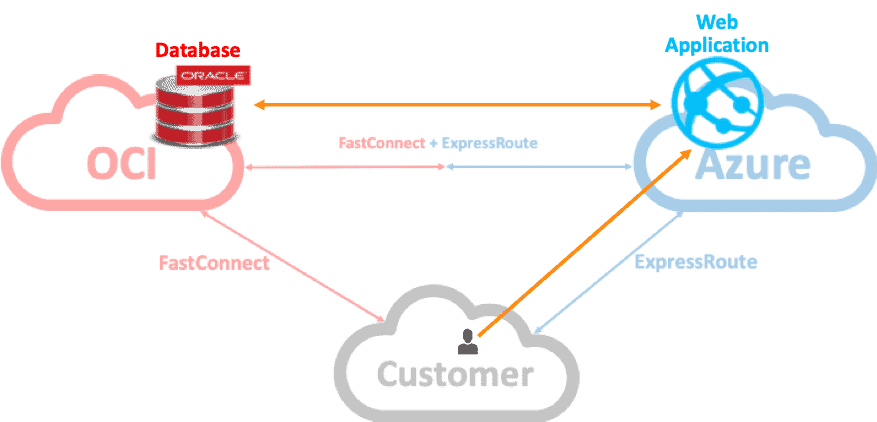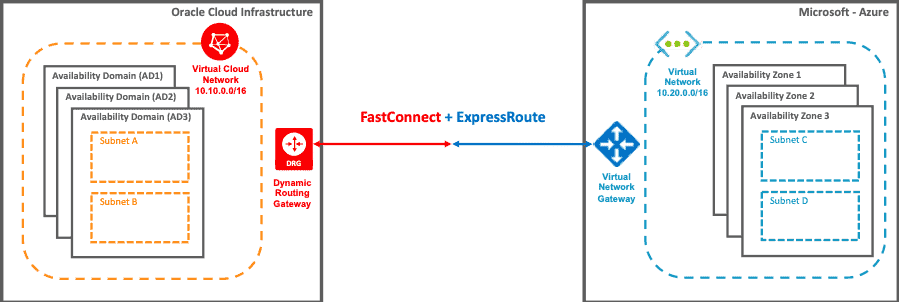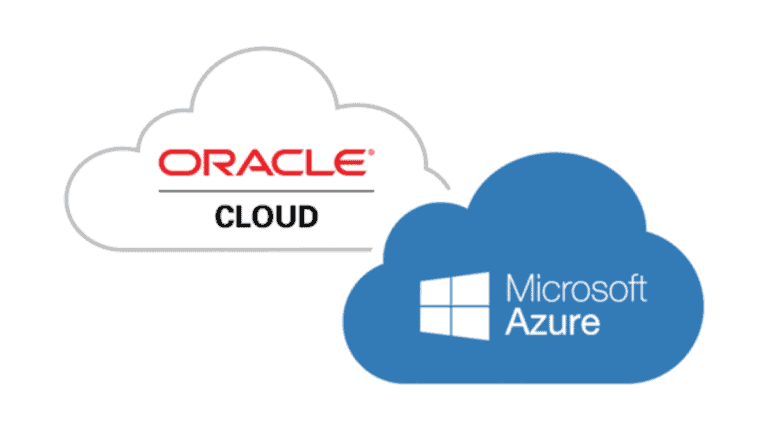Setting up a so-called interconnect between the Microsoft Azure Cloud and the Oracle Cloud has been possible for some time now. This gives you a fast private connection between the two cloud environments and enables applications to be active in both environments. This feature is not yet very well known, but it can be interesting for many companies. We talked about it with SOHO Media Solutions, a company that actively uses this feature.
It is unclear how many customers use this feature. Numbers on this are not being shared, not by Microsoft nor by Oracle. We can imagine that the feature is not being used on a large scale yet, but the feature does offer opportunities. Each cloud has its own specialisations and features that distinguish it from the competition. Wouldn’t it be nice if you could use and combine the best products from two different cloud environments?
What is SOHO Media Solutions?
The Luxembourg company, SOHO Media Solutions, actively uses the interconnect feature. SOHO Media Solutions is a company that collects, analyses and transforms data to be used for other applications. For example, the company is a large player in the sports industry, where it collects real-time analyses and results from all kinds of different sports events. This way, it can, for example, show the current score of major sporting events in public places such as train stations and on billboards. It is also possible to prepare the results for publication online or in a newspaper.

SOHO also has a division focused on startups. More and more data-driven startups want to merge datasets and apply algorithms and analyses on it to get more value out of the data. By doing this the data become so valuable that companies are willing to pay big bucks for it. Processing, transforming, merging and analysing data are complex tasks, as is developing algorithms. SOHO technology, combined with the ideas of startups, can quickly lead to very interesting solutions.
SOHO leans on Azure and Oracle Cloud
SOHO makes no secret of the fact that it leans on two different worlds: Oracle applications and Microsoft applications. The development work at SOHO is mainly done in .NET, giving Azure an edge in the cloud. The .NET programming language is made by Microsoft. Therefore, all .NET applications are able to run in Azure, often in containers on a Kubernetes platform. SOHO also uses Azure Cloud’s IoT Hub for various applications. The company states that the flexibility of the Azure Cloud, the portal and the marketplace are extremely attractive for the company.
In the Oracle Cloud you can find the heart of every SOHO application, which is the Oracle database where all data is stored. SOHO actively uses the Oracle Autonomous Data Warehouse. It’s an autonomous database with an enormous amount of possibilities and advantages compared to many other databases because it removes almost all the complexities of managing a data warehouse and securing data. SOHO has also looked into purchasing the Oracle database through partners or in another cloud, but this is much more expensive than using the Oracle Cloud.

Another big advantage for SOHO is that the Oracle database already meets many compliance requirements out of the box. For example, all data is encrypted and compressed by default. Also, Oracle offers many guarantees, such as failovers, data guards and redundancy. In an Oracle database, data loss should be impossible.
In addition to the database, SOHO also uses the Oracle digital assistant, cloud control and the blockchain solution. Furthermore, both clouds use monitoring tools. SOHO relies on the cloud region in Amsterdam, which has been active since February of this year, for backing up its data in the Oracle Cloud.
How does SOHO connect the two worlds in two different clouds?
The infrastructure layout developed by SOHO would’ve been unthinkable just a few years ago. In any case, people would think the architect is mad. On the one hand, you have all of the software and IoT applications in the Azure Cloud, while the necessary data is stored in the Oracle Cloud. You could link everything together over the internet, but the chance of a successful implementation is extremely slim. It introduces too many uncertainties. The interconnections’ reliability leaves much to be desired, not to speak about the costs of data traffic (egress) between the various clouds.
Microsoft and Oracle entered into a cloud collaboration in the summer of 2019. In some regions, the Oracle Cloud region is directly linked to the Azure Cloud region. Physical direct connections have now been established between the two data centres. The companies call this an interconnect, and customers of both companies can use it by setting up such a connection in the cloud control panels. For around 250 euros per month, you can make a private connection between your two cloud environments at a speed of 1 gigabit per second. Oracle charges around 50 euros for this, and you’ll have to pay about 200 euros to Azure. The data traffic that runs over this private connection is not charged separately as egress costs.
SOHO uses this interconnect to tie its two worlds and infrastructures together and make them one. We asked SOHO how well this works and they say has worked seamlessly so far. The interconnect is programmed so that it can also scale up and down for peak moments. Higher speeds than 1 gigabit are possible, there are options for 10 or 20 gigabits. SOHO states that the latency between the two clouds is minimal as well. This latency is generally 1 to 2 milliseconds max.
“The latency between the Azure is 1 to 2 milliseconds max.”
SOHO has currently employed interconnects in Amsterdam and London, between the Oracle and Azure regions. A third interconnect, on the east coast of the United States, is scheduled to be launched shortly. Furthermore, the company is preparing a major project in Hong Kong, which would mean that, in 2021, an interconnect will also be made between the Oracle Cloud and Azure Cloud in Japan.
Interconnect between Azure and Oracle achievable for every company
Based on the experience SOHO gained in Europe with the interconnect, the company is confident that they can use it worldwide and benefit from this rather unique collaboration between Microsoft and Oracle.
Based on the information and prices SOHO has shared with us, we can conclude that such an interconnect is not only feasible for the massive companies, but startups can also benefit from this technology as well. Many startups generally choose one of three large cloud players. With this interconnect, Oracle makes the power and added value of the Oracle Autonomous Data Warehouse available in Azure. This is very valuable and can be why many startups choose for Oracle Cloud and consider other Oracle Cloud services.
We are curious to see whether more companies will sign up for this interconnect and whether this will really become a common feature in combination with the Oracle Cloud.
